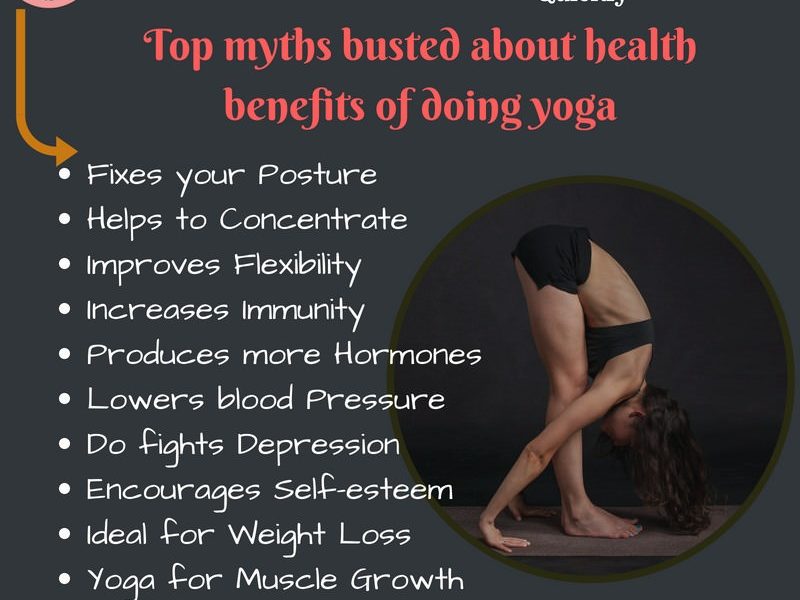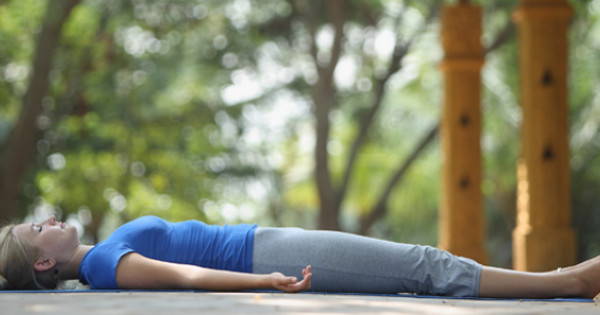
Bikram Chudhury made his first visit to the United States in 1971. It was on a mission sponsored at the American Medical Association. He wanted to show how yoga can be beneficial for people with chronic diseases. He later established the Yoga College of India in Beverly Hills, California. Bikram is known as the "guru-of-the stars" and teaches hundreds more yoga teachers every year. Hot yoga, despite its popularity, has many critics.
Yoga encourages compression and extension. Each pose temporarily blocks circulation. Once the poses are over, fresh blood can be pumped to that area. This is thought to rid the body of bacteria and toxins as well as infection. Locust Pose is a pose where practitioners place their arms on their forearms, and then let go. Bikram yoga's intense heat and repetitive movements create a feeling of well-being and health.
Bikram Yoga is very popular, but it has little appeal. People choose it because they know it is reliable. It's not the only way to go, but it is worth considering. You can find out if the class is right for your needs by visiting a Bikram Studio. There are several advantages to going to a Bikram studio, including the fact that you'll get a consistent practice.

Bikram yoga has a reputation for being flexible and high in oxygen. The practice is done in a mirrored room, which has been called a "torture chamber" by some. This style of yoga is great for improving your overall health, but there are also certain risks that you should be aware of. This article will explain the dangers and benefits of Bikram. So, if you're wondering if you should take it or not, don't hesitate to take a look at this description.
Bikram yoga studios are known for having mirrors lined them and are full of thousands of people who practice the exercise. In contrast to traditional yoga, the Bikram method is not unique. However, it has become incredibly popular in the West, and is taught by only certified instructors. The benefits of this style of yoga are numerous. It can also be used to relieve chronic pain. It is crucial to speak with a certified instructor.
Although Bikram yoga might seem great for improving your health, mainstream doctors have criticized it as harmful. While heavy sweating does cool the body it doesn’t detoxify. Your liver and kidneys are responsible for filtering toxins from your blood, and the heat in the Bikram yoga studio prevents it from cooling your body. Because it lacks air currents, your body may find it very difficult to cool off.
Bikram yoga is an alignment-based type of yoga. It is not only about alignment, but also about safety. When practicing, it's crucial to maintain a correct posture. It's also important that your joints, muscles, and tendons are flexible. Avoid the hot rooms as much as you possibly can. Although it isn't dangerous, the hot room may not be suitable for everyone.

Besides being dangerous, hot yoga can also worsen the symptoms of multiple sclerosis and can be dangerous for those with heart or blood pressure problems. These conditions should be avoided. If it is too hot they should stay at home. They should avoid the heat and should drink plenty of water before and after class. The yoga class should not be boring. Bikram is a great option for people suffering from dehydration.
Bikram Yoga and general hotyoga are different in their meditation methods. The objectives of general hot yoga classes are different. These classes are more for beginners and focus on strength building and stretching. Bikram Yoga is meant for adults, but it's also designed for children and young adult. The class focuses on getting in and out and transitions. The teachers and instructors will differ in their intensity, as will the class's intensity.
FAQ
Is weightlifting more effective at burning fat?
Although weight lifting can help you lose fat more quickly, it is best to combine it with cardio exercises.
You should do weightlifting after your cardio workouts to maximize its benefits.
Weightlifting, when done properly, increases your heart rate.
It is important to combine cardio with it, as you will not see significant changes in your body's composition.
Are there any benefits to practicing yoga?
Yoga has existed since ancient times. It has only recently been more popular. Celebrities and ordinary people love yoga.
Yoga is great because it strengthens your muscles as well as stretches them. It also relaxes your mind and makes you calmer.
Yoga is more focused on breathing than other forms of exercise.
To improve your balance and flexibility, you can try different poses.
What is the best workout order?
It all depends what you want. You should start with heavy weights if your goal is to build muscle mass. Next, move on to cardio. Then if you want to lose weight, go from cardio to strength training.
If you just want to burn fat, start by doing cardio. You can then add strength training.
You should do cardio last if your goal is to increase muscle mass. This stimulates growthhormones, which helps build muscle mass.
Also, eat before you workout. This will fuel your muscles, making them work harder. Plus, it makes you feel better during your workout.
Is it true to say that protein overeating can lead to kidney stones?
Protein helps to maintain healthy bones, tissue, and skin. However, too much protein can result in calcium excretion through the urine. This can cause kidney stones.
It is important that you note that not all people develop kidney stones when they consume more than 2 grams of protein per kg (2.2 pounds). It is possible to eat high levels of protein without developing kidney stones.
You can prevent kidney stones by watching your sodium consumption. Sodium is important for maintaining the body's water balance. A high level of sodium can increase the risk of developing kidney stone.
You can also reduce your intake of proteins if you develop kidney stones. Protein accounts for about half the daily caloric requirement of most adults. Reduce your intake of protein and you will likely lose weight.
If you do decide to eat more protein, don't go overboard. Aim for less than 20% of total calories from protein.
Statistics
- 10 pounds in a month is likely during a lean bulking phase, especially for beginners. (muscleandstrength.com)
- Candidates and applicants must pass all four tests at 70% (minimum level) to graduate from Basic Deputy U.S. Marshal (BDUSM) Training. (usmarshals.gov)
- An estimated calorie range for moderately active adult males falls between 2,200 to 2,800 calories per day, depending on age. (eatright.org)
- According to the American Academy of Dermatology (AAD), men over 50 are at a heightened risk of developing it. (healthline.com)
- The PRS enabled risk stratification for overall prostate cancer and lethal disease with a four-fold difference between men in the highest and lowest quartiles (HR, 4.32; 95% confidence interval [CI], 3.16-5.89). (pubmed.ncbi.nlm.nih.gov)
External Links
How To
How do I lose weight while working out?
Exercise burns calories by increasing metabolism and oxygen consumption.
Moderate intensity exercise is a safe way to lose weight.
These are some tips to help you lose fat while working out:
-
Cardio exercises like walking, running (or jogging), swimming, cycling, running, and/or elliptical training are all good options.
-
Do 30 minutes of exercise three times a week.
-
You can lose weight by adding strength training to the routine.
-
Avoid intense training. You can build muscle without breaking down muscle tissue.
-
Drink plenty of water during exercise. Water flushes out toxins and helps keep the body hydrated.
-
After working out, drink low-fat protein shakes. Protein shakes boost energy and repair muscle tissue.
-
You can eat smaller meals throughout the day so that you don't feel hungry in between meals.
-
Don't skip breakfast! Skipping breakfast can leave you feeling tired and sluggish.
-
Take care of your mental health. Stressful situations can slow down metabolism.
-
Keep a positive attitude. Research shows that overweight people gain more weight if they believe they are overweight than those who believe they look good.
-
Get enough rest. Lack of sleep makes it harder to burn fat.
-
Active living is key. Be sure to get up and move around every hour or two.
-
Maintain a healthy diet. Eat right to feel satisfied and full for longer.
-
Find relaxation methods. Relaxing doesn't mean your body releases stress hormones which cause muscle tissue to be destroyed.
A balanced diet is one that includes all of the essential nutrients required for growth.
You should eat six small meals per day rather than three large ones. This allows your body time to digest what you've eaten.
You need about 500 milligrams of calcium daily to maintain strong bones. Calcium can be found as a dairy product such as milk, yogurt and fortified soy drinks, orange juices, cereals, breads, and cereals.
Calcium is found in leafy vegetables, beans and tofu, as well nuts, seeds and cheese.
Your body needs vitamin D to absorb calcium. It's found in fatty fish, egg yolk, and some fortified foods.
Vitamin E is important for skin health. Vitamin E is found in vegetable oils and wheat germ oil, as well as peanuts, almonds and sunflower seeds.
Zinc is essential for healthy immunity and wound healing. Zinc can also be found in legumes, oysters, meats and whole grains.
Zinc deficiency can cause fatigue and loss of appetite. It can also lead to depression and impaired immunity.
Eating too much sugar causes insulin resistance, which increases blood glucose levels. Insulin resistance leads directly to weight gain.
Insulin resistance is caused by high blood levels of free-radicals. Free radicals are molecules with unpaired electrons that damage cell membranes and other parts of the body.
Most free radicals come from pesticides herbicides, food additives, preservatives smoking, radiation, chemical in cosmetics, lotions and household cleaning supplies.
Free radical damage may lead to cancer, heart disease diabetes, arthritis, asthma and other conditions.
Antioxidants are essential for preventing free radical damage. Antioxidants protect against oxidative damage.
Vitamin C (found on citrus fruits), Beta carotene, found in carrots and sweet potatoes, spinach and broccoli, cantaloupe (found in tomatoes, mangoes and peppers), and Vitamin E (found nuts, olive oil and avocados).
Selenium, copper and manganese are all antioxidant nutrients.
Selenium is known to protect cells from the oxidative damage that free radicals can cause. Selenium is found in Brazil nuts, tuna, liver, kidney, shrimp, cod, turkey, beef, lamb, pork, and chicken.
Copper protects the eyes, brain, lungs, liver, and red blood cells. Copper is found in shellfishes, poultry, meat, organ meats, and other foods.
Manganese is essential for bone structure. Manganese is found in brown rice, spinach, bananas, prunes, raisins, oatmeal, and lentils.
Zinc is important for healthy growth, reproduction, and wound-healing. Zn is present in lean cuts of meat and white fish, as well as eggs.